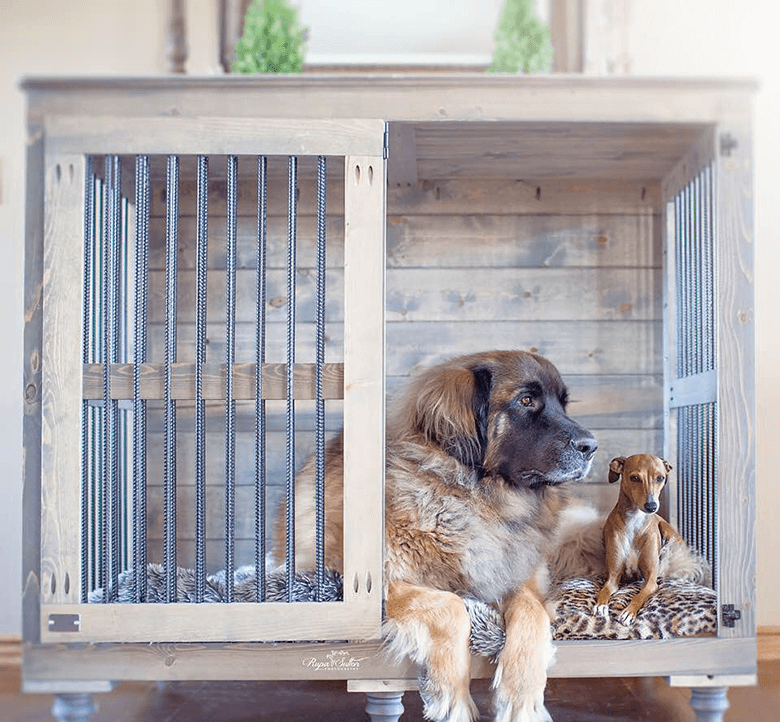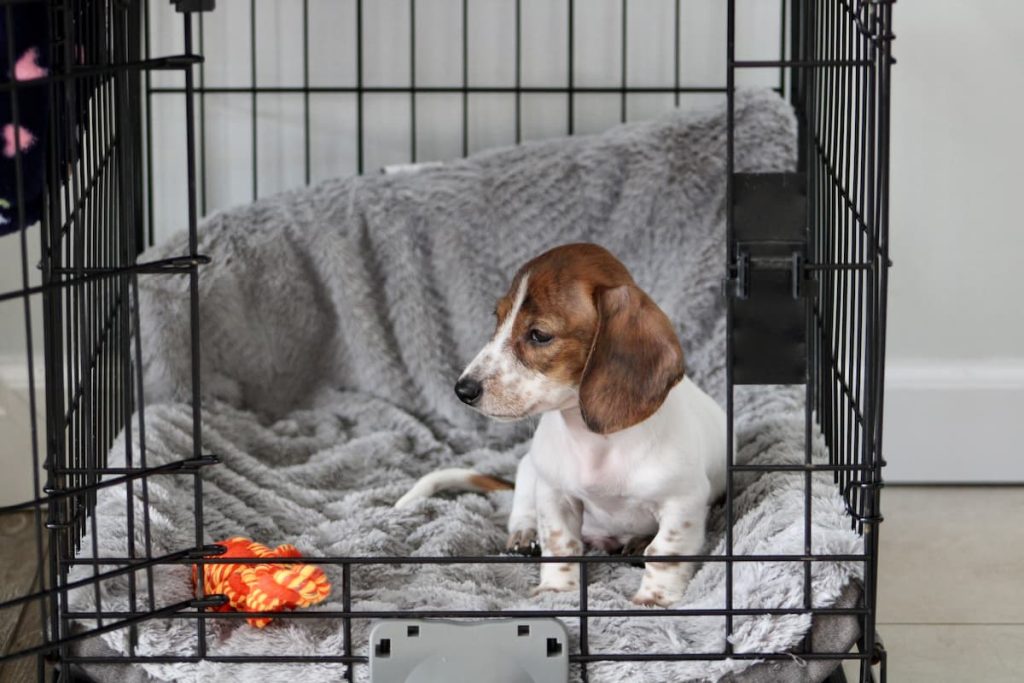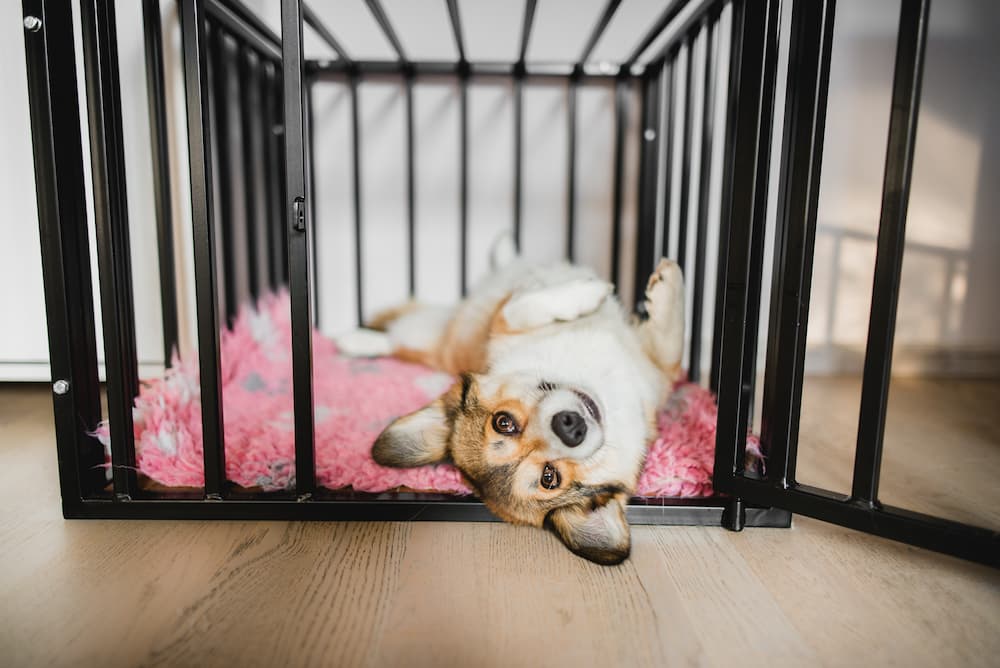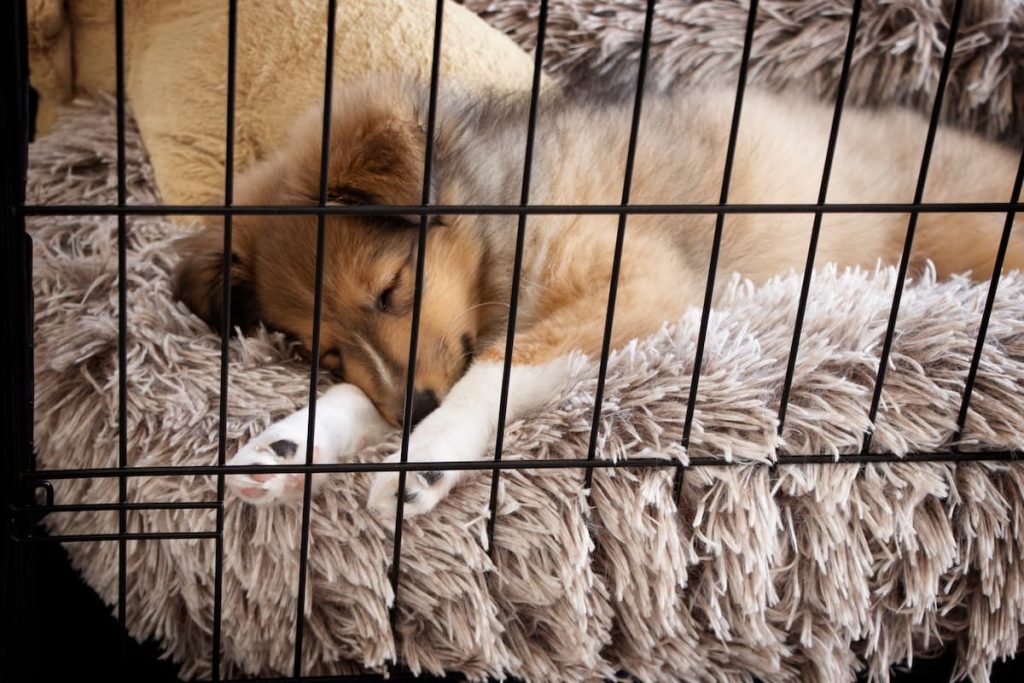Crate training is a topic that we could all use a bit more information on.
To new pet parents, the idea can be a bit intimidating. For seasoned pet owners, maybe it makes sense but you’re not sure how to get started.
The good news? When done properly, crate training isn’t just safe, it’s something most dogs grow to love. It’s actually one of the most effective tools you can use to help your dog feel safe, settled, and supported.
In this guide, we’ll break down the benefits, clear up common misconceptions, and walk you through how to get started.

Let’s start with the elephant in the room…
Is crate training cruel?
Let’s tackle this first, because it’s a question a lot of people have.
Some Pet Owners worry that crate training is like putting a dog in jail. But in reality, when introduced the right way, crates tap into your dog’s natural instincts. Dogs are den animals by nature, and many feel more comfortable and secure when they have a space of their own to retreat to—like a modern-day dog cave.
According to the RSPCA and the Humane Society, a crate can help satisfy that instinct by providing a quiet, calm environment. It becomes their safe zone rather than what many people may think is a place of punishment.
Crate training can also help with:
Toilet training – dogs naturally avoid going to the toilet in their sleeping area
Chewing behaviours – it keeps them out of trouble when they’re unsupervised
Recovery after surgery or vet visits – crates offer a space to rest safely
Reducing anxiety during stressful events like storms, parties, or when new people visit
The key is to build a positive connection with the crate, never use it as a punishment, and always take things at your dog’s pace.
Common misconceptions about dog crates & crate training:
Misconception #1: Crate training is cruel or inhumane
Truth:
When done correctly, crate training is not about locking a dog up. It’s about providing a safe, calm, and cosy space where your dog feels secure. Most dogs come to see their crate as a den-like retreat, not a punishment.
Misconception #2: Dogs only go in crates when they’re in trouble
Truth:
Crates should never be used as a punishment. Using the crate as a “time out” teaches your dog to associate it with fear or confusion. Instead, crate time should always be a positive experience filled with rewards, rest, and comfort.
Misconception #3: Crate training is only for puppies
Truth:
While crate training is often introduced during puppyhood, dogs of all ages can learn to feel comfortable in a crate. Older dogs might need a bit more time and patience, especially if they’ve had negative experiences, but it’s absolutely possible.
Misconception #4: Crates are just for house training
Truth:
Crate training is helpful for toilet training, but that’s just the beginning. Crates can assist with managing chewing behaviours, reducing separation anxiety, offering recovery space after vet visits, and providing a safe zone during stressful events (like thunderstorms or visitors).
Misconception #5: Dogs hate being confined
Truth:
Dogs are naturally den animals. When introduced gently, many dogs actually seek out their crate as a place to relax, nap, or escape overstimulation. It becomes their own little sanctuary.
Misconception #6: Once crate trained, dogs can stay in there all day
Truth:
Even a crate-loving dog shouldn’t be left in a crate for long periods, especially not daily. Dogs need exercise, mental stimulation, human interaction, and potty breaks. Crates are a tool for safety and routine, not long-term confinement.

Common crate training challenges
Not every dog takes to crate training right away, and that’s completely normal. Some pups need more time to get comfortable with the idea.
If your dog is:
Nervous around the crate – give them more time to explore it before adding treats or meals
Worried when the door closes – stick to very short intervals and reward calm behaviour
Whining or barking in the crate – it’s a sign they’re not ready for longer periods just yet
The most important thing to remember is this: go at your dog’s pace. Crate training should never feel rushed or forced. Keep sessions short and positive, and always end on a high note!
With consistency, patience, and lots of encouragement, most dogs will come to see their crate as a safe and comforting part of daily life.
How to get started with crate training:
Crate training a puppy is ideal because it will allow your dog to associate a crate with safety at a young age. That said, it’s also possible to crate train an older dog – you just might have to do some extra coaxing!
Patience is key, but it’s well worth it!
To learn some step-by-step instructions to warm your doggo up to a crate, follow these 10 steps >
Need some help to get their crate training going?
Search for a Dog Trainer in your area to help >



4 comments
Crate training was the best thing I ever did for my timid puppy. It gave her a safe place to retreat when she was unsure, it helped with toilet training and gave her her own place where she feels safe and secure. Can’t recommend enough! Not every dogs needs it but crate training has had great benefits for our puppy!
Highly recommend crate training. Have used on my two girls aged 9 & 6 from puppy stage. Helps with toilet training and training in general. Also good for keeping your puppy safe for short periods when you can’t be with them constantly. It is their secure den which they love for quiet time or sleeping in when they were puppies and also to this day, nothing cruel about It. Also good for puppies/dogs to be comfortable in a crate as trips/stays at the vet are inevitable.
I would never place any of my dogs in a crate they have come from a place where they were in a ‘crate’ for 23 hours out of 24. It may work for some.
We completely hear you. For some pets who have had previous (very negative) experience with crates, it may not be a suitable option. There are many positive aspects, but it’s down to the pet and the owner to determine what’s right for them.